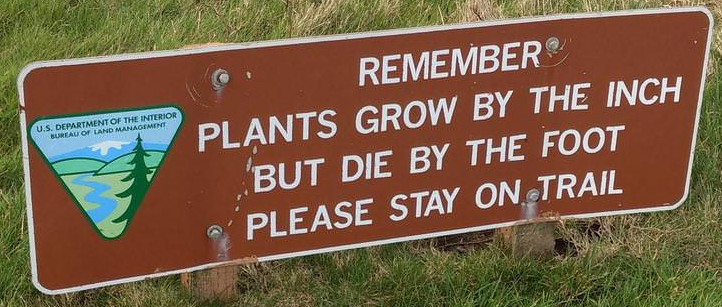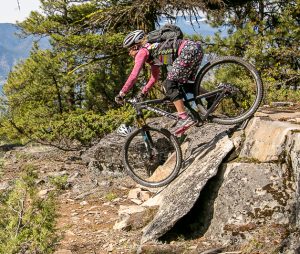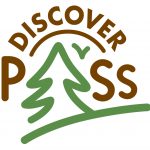We are loving our crown lands to death, particularly those crown lands closer to population centers and closer to particularly attractive destinations. There is also a common public attitude that we can do whatever we want on crown lands, with very vocal opposition to any restrictions on what recreational activities people can engage in on crown lands. Enforcement activities are limited, in large part due to a lack of resources for enforcement activities. Those recreators causing the most damage are therefore unlikely to be held accountable for their actions. What can be done?
 The impact a recreational user has on the land depends on the recreational activity, the sensitivity of the environment, the amount of use, and the condition of the recreational infrastructure. In popular hiking areas, hikers shortcutting trails contributes to erosion, damaging trails and the surrounding natural areas. In sensitive habitats “plants grow by the inch and die by the foot.” Hikers are encouraged to stay on the trails, and in some areas, such as the West Coast Trail, the number of people using the trail is also restricted.
The impact a recreational user has on the land depends on the recreational activity, the sensitivity of the environment, the amount of use, and the condition of the recreational infrastructure. In popular hiking areas, hikers shortcutting trails contributes to erosion, damaging trails and the surrounding natural areas. In sensitive habitats “plants grow by the inch and die by the foot.” Hikers are encouraged to stay on the trails, and in some areas, such as the West Coast Trail, the number of people using the trail is also restricted.
Limiting access in some areas directs recreational activity to other areas that are not restricted. Many of these areas, while perhaps not as iconic as the areas we have protected, are also often sensitive. This is particularly true as our provincial population increases, the number of visitors to our province increases, and the technology we use to recreate on crown land has more environmental impact.
 For some, spending time in nature is primarily an opportunity to connect with the natural world. For others, it is primarily an opportunity to physically and mentally challenge oneself. For many, it is a combination of the two. Hikers may try to hike farther, may try conquer summits that are technically challenging or far away from regular access. Mountain bikers may seek a challenging downhill run. Snow mobile riders like the challenge of high marking a steep slope. ATV riders enjoy the challenge of negotiating complicated terrain. We enjoy the discovery of new challenges and the satisfaction of overcoming them through our personal physical abilities and our skills at handling our equipment, be that a hiking boot, a climbing rope, a mountain bike or a quad. While the motivations for our recreational choices may not be that different, the impacts of our recreational choices are. For every hour outdoors or every kilometer travelled, the quad rider has more impact on the outdoors than the hiker. If we are going to ensure that all, regardless of their recreational mode of choice can continue to enjoy our crown lands, we need to accept that different modes have different impacts, and that use needs to be managed relative to these impacts.
For some, spending time in nature is primarily an opportunity to connect with the natural world. For others, it is primarily an opportunity to physically and mentally challenge oneself. For many, it is a combination of the two. Hikers may try to hike farther, may try conquer summits that are technically challenging or far away from regular access. Mountain bikers may seek a challenging downhill run. Snow mobile riders like the challenge of high marking a steep slope. ATV riders enjoy the challenge of negotiating complicated terrain. We enjoy the discovery of new challenges and the satisfaction of overcoming them through our personal physical abilities and our skills at handling our equipment, be that a hiking boot, a climbing rope, a mountain bike or a quad. While the motivations for our recreational choices may not be that different, the impacts of our recreational choices are. For every hour outdoors or every kilometer travelled, the quad rider has more impact on the outdoors than the hiker. If we are going to ensure that all, regardless of their recreational mode of choice can continue to enjoy our crown lands, we need to accept that different modes have different impacts, and that use needs to be managed relative to these impacts.
 Our neighbour to the south manages access and use of national and state lands through a system of passes and permits (Washington Trails Association). Passes are purchased per trip or annually, providing funds for managing national and state lands. Permits are required to access areas with use restrictions. The need for passes and permits also provides a mechanism for educating users about their responsibilities when using these public lands. The routine purchase of a pass is an opportunity to provide recreators with information such as this Washington DNR Brochure.
Our neighbour to the south manages access and use of national and state lands through a system of passes and permits (Washington Trails Association). Passes are purchased per trip or annually, providing funds for managing national and state lands. Permits are required to access areas with use restrictions. The need for passes and permits also provides a mechanism for educating users about their responsibilities when using these public lands. The routine purchase of a pass is an opportunity to provide recreators with information such as this Washington DNR Brochure.
Here in BC we suffer from a lack of resources to maintain and expand camping facilities, build and repair trails, administer and regulate the activities of volunteer groups, rehabilitate areas damaged by recreational users, and enforce regulation of recreational use. The provincial government struggles to justify devoting more resources to these activities against pressures to keep taxes low and spend more on healthcare, education, and infrastructure like roads. Collecting fees from recreational users that are dedicated to the sustainable management of recreational use on crown land provides the potential to alleviate this resource issue.
Given the impacts of different modes of recreation on the land and the different costs of both building infrastructure and rehabilitating damage, it makes sense to have an annual feed that differs by mode. The mode groups might be:
- Off highway vehicles
- Motorized snow vehicles
- Campers
- Mountain bikes and similar human powered modes
- Skiers, snow shoers, and similar human powered winter modes
- Equestrians and similar animal assisted modes
- Hikers
While catching and prosecuting the ‘bad apples’ in each of these groups is a challenge, it is fairly easy to identify the damage done by each mode. The annual fee should be set such that there are sufficient funds to rehabilitate the damage done annually by each mode, together with funds for education, facilities construction, and maintenance and enforcement. The province could be divided into regions, with fees reflecting the regional impact of the different recreational users. The annual fees could then be adjusted by region, based on the damage observed. In those areas where user groups are more effective at self-policing, annual fees would be lower. As in Washington State, visitors to BC would also need the appropriate pass, purchased prior to recreating on crown lands.
Our province has some of the most varied and unique landscapes in Canada. However, these landscapes have a limited capacity to recover from the impacts of our recreation. We need the resources to effectively manage our landscapes to minimize the adverse impacts of our recreational activities so that all, present and future, continue to be able to enjoy their beauty. An annual recreational licence could be a source of funds for addressing the management challenges and a tool for educating recreationalists about responsible recreation with their preferred modes. Perhaps it is time for such a licence system in BC.

 Follow
Follow
Thanks, John, for another thought-provoking blog. Although I agree with the general concept that ‘users should pay’ to mitigate damage, I suspect enforcement will be a major (and costly) challenge. Imagine someone driving along a highway though Crown Land and deciding to make a stop for a short hike with family to stretch legs. Would one really need a permit for such an impromptu stop in the middle of nowhere? Are the offenders likely to be ‘caught’ by a conservation officer?
There is a much larger,structural challenge in my opinion. Recreational activities such as those you discuss (i.e., hiking, hunting, ATV riding) are enabled only when there is physical (easy) access to Crown Land, which means a pre-existing network of roads and trails. People don’t just land in the middle of the forest…they have to get there, usually with a car or truck. The management challenge is to restrict construction of new roads (for logging and mining, mainly) and then to restrict access to those roads and trails by the public (and ultimately decommission them properly). Without roads, people can’t (and won’t) access the wilderness that we value, at least not without serious personal effort.
Perhaps the government needs to impose a greater tax on those industries that exploit the resources on Crown Lands in order to mitigate the inevitable damage that follows a phase of road building. This won’t be a popular move because these resource-extracting industries (e.g., forestry) are already economically challenged. But in the end, the consumer pays the price so I suppose it comes down to which ‘user’ has to open the wallet (the hiker for use of a trail or the house builder for the true cost of the wood). Or we can continue to ignore the problem and slowly destroy the natural splendor around us.
As always, thanks Bernie for thinking carefully and critically about what I have written. I agree that enforcement isn’t really a practical solution in isolation. I don’t know how many people go through our national parks without a park pass, and stop for a short hike. I’ve done it on occasion, and not been caught. I can’t recall intentionally littering. However, I can recall having stopped on a hike for a break, and then realized a while later that the granola bar wrapper is not in my pocket. There is a stream in the literature that emphasizes design – build your trails, etc. such that they are either more attractive than shortcutting or that doing so is more difficult. Put in railings on the approach to a switchback in a trail so that when people see the trail below, it is difficult to shortcut. I think your suggestion of limiting roads to concentrate recreational activity in areas where it can be better managed is kind of like design.
Enforcement, together with education, and mechanisms for concerned citizens to report violators, works to build and sustain a social norm of responsible behavior. I think most people believe it is wrong to litter. I think that almost nobody gets caught and fined for littering, in spite of the warning signs. However, there is some, and it needs to be cleaned up. In some cases, volunteers do it. In other cases, people are paid to clean up the litter. I’ve taken to saying ‘thank-you’ when I cycle past a city worker picking up trash from the ditch.
There is a public sentiment that we “shouldn’t make criminals out of law abiding citizens” who argue we should go after the true criminals and leave the good citizens alone. However, we can’t practically catch many of the actual criminals, and I think have to accept the fact that damage will occur. Cleaning up the damage and taking measures to reduce the likelihood it occurs – design, enforcement, education – is going to cost money. There I think the cost should be borne in relation to the amount of damage done by different modes. Seeing slalom skid tracks created by mountain bikers on the shale slopes in the South Chilcotin, the destruction being done by dirt bike riders in Spion Kop, etc. requires, in my opinion, some sort of action.